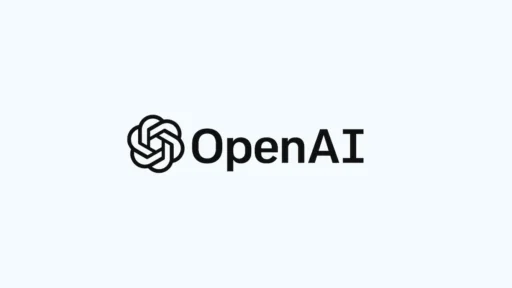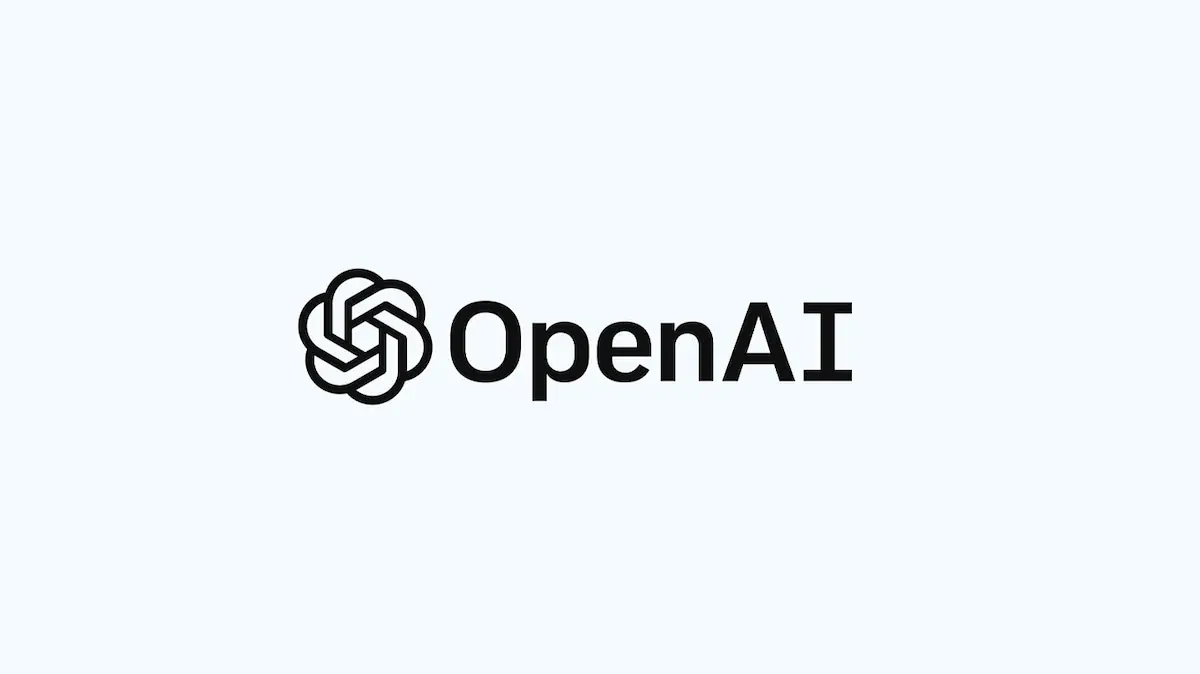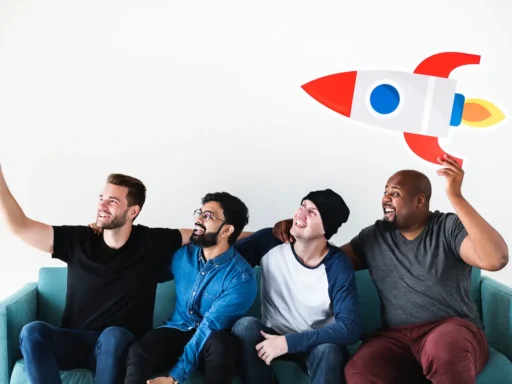When was the last time your AI assistant blew your mind? If your answer is “never,” buckle up. OpenAI just rolled out GPT-4.5 and the buzz isn’t just hype—it’s impact. People aren’t just asking if it’s better than GPT-4; they’re wondering where it’s been hiding all this time.
Whether you run a business, build apps, or just want your tools to stop hallucinating every five prompts—this is the version you’ve been waiting for.
It’s fast, precise, and surprisingly good at grasping the exact context of your messy, half-typed question. You know, the kind of prompt you send before your coffee kicks in.
And OpenAI? They’re not playing small here. This isn’t a minor update. This is the jump that’ll power smarter bots, handle nuanced requests with less bias, and finally make large language models feel less… robotic.
From startups building million-dollar tools overnight to your favorite platforms working smoother, this release might be the beginning of AI actually making your life easier, not just cooler.
Openai’s Commitment To Advancing Ai With Gpt-4.5
OpenAI isn’t just shipping updates anymore—they’re on a mission to redefine what “smart” tech looks like.
Their north star? Build AI that helps people first, not just corporations padding margins.
GPT-4? That was a turning point. It made AI feel usable, almost assistive. But GPT-4.5 shifts into something deeper: real collaboration between human and machine.
Here’s what changes:
- Context mastery: It remembers parts of your query better, avoiding those awkward repeats.
- Precision: GPT-4.5 is cleaner with facts—not perfect, but closer to your target answer.
- Speed: Outputs land faster, especially with tasks like code generation or legal drafts.
That means fewer rewrites. Less time spent babysitting your AI. And for developers, a model that pulls its weight across test cases, not just demos.
OpenAI’s public release notes didn’t boil over with overpromises. Instead, they focused on three things: smoother outputs, reduced model latency, and tighter grounding to source material—big wins for anyone tired of AI that “wanders.”
It’s not about being smarter just on paper—it’s about being useful in real time, live, in business systems and creative projects.
Key Highlights Of Gpt-4.5 In Action
GPT-4.5 isn’t just an under-the-hood refresh—it’s got serious upgrades that users across sectors are noticing fast.
| Upgrade | Impact | Industries Benefiting |
|---|---|---|
| Expanded Token Window | Longer context memory for better conversations | Education, Legal, Publishing |
| Improved Fine-Tuning | More accuracy for custom AI integrations | Healthcare, SRM, SaaS |
| Lower Latency | Faster, cleaner responses | Customer service, Retail, Development |
In banking, GPT-4.5 is already running simulations for fraud detection—flagging patterns that humans might breeze past.
In education? It’s testing as a co-pilot for language learning apps, giving context-rich feedback that goes beyond grammar corrections.
Writers are using it for scene mapping and idea co-creation. Analysts are using it for prepping financial narratives faster than interns with three cups of coffee.
These use cases weren’t just aspirational. Companies are already building GPT-4.5 into tools people use every day. Check this example of new capabilities in motion: [How GPT-4.5 Is Changing Workflows](https://openai.com/blog/gpt-4-technical-report)
Early Buzz, User Feedback, And Market Heat
The second GPT-4.5 dropped, tech Twitter lit up.
Threads broke down token memory upgrades. Dev forums exploded with new benchmark scores. CEOs on LinkedIn suddenly started talking about “AI alignment” again—and no, not the ethics-only kind.
Here’s what the early adopters are saying:
– “GPT-4.5 is what GPT-4 should’ve been.”
– “Less hallucinations. More speed. And it handles my niche queries about tax law like a seasoned paralegal.”
– “Our chatbot’s pick-up rate went up 30% overnight without retraining the backend.”
And the reaction isn’t just hype.
A small ecommerce startup in Berlin bumped product descriptions with GPT-4.5—cutting content costs by 42% and increasing organic ranking in weeks.
Enterprise devs testing it in customer workflows noticed fewer retries, shorter session durations, and tighter support satisfaction loops.
The market reaction? Investor decks are now name-dropping GPT-4.5 features as integration milestones—not wishlist items.
If GPT-4 opened the AI door, GPT-4.5 is walking through it, building rooms, installing light switches, and inviting businesses to move in.
GPT-4.5 Research and Development
What does it actually take to train a model that understands nuance, culture, and context better than its predecessors? Behind the GPT-4.5 release lies months of painstaking experimentation, labs that roared like server furnaces, and breakthroughs that were more survival than celebration. This isn’t just a story about smarter AI—it’s about what it costs to make machine learning more human.
Cutting-Edge Research Behind GPT-4.5
GPT-4.5 didn’t just emerge with sharper intellect; it came from the wreckage of failed trials and big ideas once thought too ambitious. One of the major scientific hurdles? Balancing memory depth with computational cost. The research team engineered a hybrid attention mechanism to optimize both learning speed and recall capability.
Reinforcement Learning from Human Feedback (RLHF) became more than a tool—it became the spine. Engineers built a two-tier reinforcement system that incorporated not only preference rankings but scenario-based ethical decision grading. Unlike its predecessors, GPT-4.5 doesn’t just “guess better”—it asks better internal questions.
Collaboration with Universities and Global Research Labs
OpenAI didn’t go it alone. From the robotics labs at ETH Zurich to NLP think tanks at UC Berkeley, GPT-4.5 represents a stitched global mind. New loss functions developed jointly with the University of Toronto helped GPT-4.5 reason across contradictory prompts with reduced meltdown risk.
Some of the most revealing innovation came from data optimization at scale, co-piloted with researchers in Singapore and Japan, where low-power inference methods were prototyped and later rolled into the commercial version of the model. These global nodes didn’t just reduce model latency—they reduced carbon cost per query by roughly 13% during training in test regions.
Ethical Considerations During Development
Behind every additional parameter in a model like GPT-4.5 lies a set of ethics switches: what to include, what to censor, and what might backfire. OpenAI claimed a more “ethically hardened” model—but what that means is still being decoded by watchdogs.
- They introduced bias-weighted sampling pools—particularly targeting linguistic neutrality in tense political narratives.
- Implemented propaganda trigger-alerters to catch misinformation amplification.
Still, some researchers argue GPT-4.5 cleaned what it couldn’t understand—sanding over cultural edges in the name of “safety.” The old question returns: safe for whom? And at what cost to linguistic and cultural nuance? Expect that debate to grow louder, especially with GPT-5 on everyone’s radar.
The GPT-4.5 Market and Its Emerging Impact on AI Trends
With the GPT-4.5 release, OpenAI didn’t just enter the next version cycle—it dropped into a highly volatile AI marketplace already inflamed by investor hype and regulatory skirmishes. What makes GPT-4.5 matter isn’t just its intelligence—it’s how fast enterprise has started rewriting their workflows around it.
GPT-4.5 in the Global AI Market
Compared to Claude, Gemini, and Meta’s open weights, GPT-4.5 positions itself like the Tesla of language models—exclusive, premium-tuned, and one step ahead on UX. Analysts project GPT-4.5-style models could dominate 75% of the LLM service layer by 2027.
OpenAI’s early integrations with partners like Microsoft gave it a head start. Azure’s latest Office integrations already run on GPT-4.5, quietly rewriting emails, pitch decks, and meeting summaries. The model doesn’t just finish your sentence—it outsmarts your workflow.
Adoption by Startups and Established Companies
Startups have taken GPT-4.5 from sandbox to sales pitch. One Mexico City–based firm used it to automate indigenous language transcription—a task ignored by mainstream AI for years. Another Berlin fintech built an anti-money laundering agent that reads obscure European compliance law in seconds.
Major incumbents aren’t missing the party either:
- Microsoft rebuilt parts of its Copilot UX with GPT-4.5, citing 30% drop in user churn.
- Salesforce is piloting GPT-4.5-based auto-account managers that mimic human emotional responses in customer support.
From call centers to copywriting agencies, GPT-4.5’s reach isn’t coming—it’s already reshaping how mid-tier operations function.
Economic and Workforce Impacts
It’s not all growth and glory. AI-native automation fueled by GPT-4.5 is touching legacy industries—some strategically, others like a wrecking ball. Early 2024 saw a 20% drop in copyediting roles across media firms using generative AI at scale.
But where doors close, windows are opening. Prompt engineers, synthetic data testers, and AI ethic monitors are new job titles born from this shift. Even small businesses are hiring ChatGPT trainers for localized model tuning.
GPT-4.5 isn’t just software. It’s infrastructure—and that means whole economies will lean into or against its momentum. Without wide-scale skill development efforts, expect that gap to widen before it narrows.
Growth Opportunities and Challenges
The question isn’t whether GPT-4.5 will scale. It’s how and where—and who gets left behind in the process. The real opportunity lies in how the model shapes sectors beyond the spotlight.
Uncovering New Industry Use Cases
Some of the most exciting uses of GPT-4.5 are hitting spaces barely touched by generative AI. In gaming, adaptive storytelling powered by GPT-4.5 lets indie developers ditch scripts for playable novels. In agriculture, it’s feeding edge-device chatbots advising on optimal planting cycles in sub-Saharan regions.
Robotics teams are leveraging GPT-4.5 for more naturalistic human-robot interaction. Think warehouse bots that can interpret vague spoken orders with 92% accuracy during field tests with Copenhagen-based logistics firms.
And underexplored? Public transit optimization, remote therapy in dialect-rich areas, and military simulation for ethics-prepped soldier training. These are no longer sci-fi margins—they’re next in GPT’s line of sight.
Challenges in Scaling GPT-4.5 Globally
But scaling smart doesn’t come cheap.
In countries with limited computational grids, GPT-4.5’s inference cost remains too high to democratize. Startups in Southeast Asia still rely on compressed or rolled-back GPT-3.5 variants to balance latency and affordability.
Deployment infrastructure is another pinch point. Data center dependency means regional expansion leans heavily on Amazon, Google, or Microsoft-controlled clouds. It’s not just computational inequality—it’s a governance bottleneck. Who owns the pipelines decides who accesses the intelligence.
Real growth won’t come from raw rollouts, but from smart localization—language packs, low-resource optimization, and trust structures built with communities, not just licenses.
Spotlight: Startups and Innovations
Startups aren’t just using GPT-4.5—they’re pushing its boundaries, asking sharper questions than anyone in Silicon Valley’s C-suites. These aren’t just apps with chatbots. They’re full-stack disruptions disguised as agile ideas.
Prominent Startups Pioneering with GPT-4.5
A Barcelona-based mental health app uses GPT-4.5 to simulate culturally-aware therapeutic conversations, minimizing misinterpretation in mental health triage. This isn’t just scaling help—it’s scaling empathy.
In Nairobi, a civic-tech company is integrating GPT-4.5 for legal AI that reads bureaucratic doublespeak and turns it into understandable Swahili for constituents filing land claims.
From Paris to Jakarta, these startups reveal what most enterprise overlooks: GPT’s future isn’t just making enterprise more efficient—it’s about making human systems more understandable.
Supporting Innovation Through OpenAI Developer Ecosystem
OpenAI’s Developer Platform isn’t just an API gateway—it’s a leverage engine. Through its grant programs and fine-tune access channels, it liberates GPT-4.5’s power from Big Tech’s grip and lets mid-sized and micro startups build with global parity.
The DevDay rollout included tools like customizable moderation layers and semantic memory expansion kits. For a startup with a small dev team, these aren’t features—they’re force multipliers.
In short, GPT-4.5’s most revolutionary code might not come from OpenAI—it’s being written in rooms with peeling paint and $2 coffees, where builders aren’t chasing exits, but impact.
Socioeconomic Impact of GPT-4.5
Everyone’s talking about the GPT-4.5 release like it’s the future—because in a lot of ways, it is. But here’s the bigger question: who’s winning, who’s losing, and what happens now that this tech is in everyone’s pockets, from classrooms to call centers?
The Ripple Effect: GPT-4.5’s Role in Society
GPT-4.5 made language less of a barrier. From rural India to inner-city Detroit, people with limited English skills finally have a shot at understanding contracts, writing emails, or even learning code—without hiring tutors or translators. That’s real-world impact.
But it’s not all upside. Jobs that used to be safe—clerks, customer service reps, entry-level content writers—are either getting redefined or wiped out. And fast.
We’re not just automating tasks anymore—we’re shifting expectations. Just having human skills isn’t enough if there’s a bot that can do it faster and cheaper. This hits lower-income workers hardest. Think service centers in the Philippines or South Africa now facing layoffs because of GPT-4.5-powered support systems.
Ethical Considerations in Widespread Adoption
Big question: who’s watching the watchers when GPT-4.5 starts running operations that impact people’s rights and livelihoods?
Misinformation’s another landmine. With slightly better coherence than GPT-4, GPT-4.5 can crank out fake articles faster than fact-checkers can keep up. It’s being used to flood local news sites with garbage info, skew search results, and even influence elections.
And privacy? Everyone wants to play with GPT-powered tools, but few know where those chat logs go. OpenAI says it doesn’t store “sensitive data”—but what about prompts containing names, IDs, emails?
Transparency has never been more urgent. If we’re going to embed GPT-4.5 into education, healthcare, justice systems—we need clear rules. And the rules can’t come from handshakes behind VC doors.
GPT-4.5 Trends and Future Outlook
Right now, GPT-4.5 sits in the driver’s seat of conversational AI. But it’s where we’re steering next that gets interesting.
Key Trends Influencing GPT-4.5’s Evolution
Customization’s the name of the game. Everyone from Shopify devs to educators wants tailored GPT outputs. That’s why fine-tuned models are booming. Small businesses are training mini-GPTs on their own data—sales calls, support chats, even Slack threads.
And let’s not ignore what’s coming up fast—Web3 and quantum computing. GPT-4.5’s already being embedded into wallet interfaces, DAO governance systems, and blockchain-based moderation tools. The idea here is AI that bridges decentralized platforms with human-level reasoning.
The scary part? GPT-4.5 works best when it doesn’t need permission. Plug it into a backend, wrap it in a UI, and you’ve got a service startups would’ve spent six figures building four years ago.
Speculations on GPT-5’s Development
If GPT-4.5 feels wild, expect GPT-5 to go full sci-fi. Smarter memory. Persistent identity. Customizable “personas” you can train from scratch. And higher-level logic: not just autocomplete, but strategic decision-making.
But 4.5 gave us some hard lessons.
- Poor moderation leads to actual harm. GPT-powered scams? They’re already a business model.
- Open-ended tools need guardrails. Not fuzzier terms of service—real-time ethical oversight built into the API stack.
- And if it’s used globally, it should be regulated globally. Right now, 90% of users have zero protection if GPT-4.5 spits out damaging advice.
If OpenAI doesn’t bake that into GPT-5 from day one? The backlash won’t be from fringe watchdogs. It’ll come from governments, unions, even everyday users who finally hit breaking point.
Opportunities for Companies, Consumers, and Developers
Look—GPT-4.5 is fuel. Whether it powers your startup or burns your job depends on how you plug into this ecosystem. It’s not about hype anymore—it’s about moves.
How Companies Can Capitalize on GPT-4.5 Solutions
Every industry is being rebuilt in real time. Got customer service pipelines? Embed GPT-4.5 to handle tier-one queries. Running a newsletter? Auto-draft subject lines, A/B test tone, optimize calls-to-action.
If you’ve got proprietary data—CRM records, internal SOPs—GPT-4.5 is your in-house consultant now. Partnering with OpenAI or using Microsoft’s Azure-based APIs lets you activate enterprise-grade solutions fast. But make it ethical. And make it documented.
Developers Building on GPT-4.5 APIs
Dev tools are wide open. From LangChain to vector DBs like Pinecone, integration has become plug-and-play. Need sentiment feedback? Summarization bots? Educational tutors? You’re maybe 200 lines of Python away.
There’s also an exploding open-source ecosystem. Check projects like llama_index or AutoGPT forks. A lot of power’s being built off GPT-4.5’s backbone—and the community’s not waiting for permission.
Consumer Power with GPT-4.5-Enabled Products
People already use GPT-4.5 without realizing it—from smart keyboards to voice-automated CRMs. Want help writing cover letters? Meal planning on a budget? Storytelling for your kid’s bedtime? Yeah, that’s AI now.
But there’s still concern baked in. GPT hallucinations haven’t vanished. It can suggest fake laws, non-existent studies, or phantom medical advice if unchecked.
Consumers want control. That means:
- Clear opt-outs for data sharing
- Readable disclosures for AI-generated content
- Built-in feedback tools to flag hallucinations on the fly
Final Call to Action: Shaping the Future of GPT-4.5
Embracing Trends While Demanding Transparency
Most users ride the tech wave without asking where it’s going. That needs to change. Understand what your tools can do—not just what the homepage says, but the fine print.
If you’re a creator, user, or dev—push for source visibility. Ask what models were trained on. Demand clarity on API decisions. Because GPT-4.5 isn’t just cool—it’s consequential.
OpenAI’s Role as a Steward of Next-Generation AI
OpenAI talks a big transparency game. But saying you’re open isn’t the same as being accountable. GPT-4.5’s impact is massive—it needs matching oversight.
We should see real transparency reports. Not just blog posts, but breakdowns of who uses the API, how feedback is logged, when models were retrained, and what protections exist post-deployment.
Got a role at OpenAI? You’re not just pushing code—you’re shaping how humanity interacts with intelligence. Don’t treat that lightly. And if you’re a bystander—don’t stay one. This is your tool now.







